Henri Matisse (1869-1954) Important series of approximately 30 autograph letters (of which 25 signed, ‘Henri’, ‘H. Matisse’ or with initials) to his wife, Amélie (‘Mélo’), almost all n.p. [but mostly Tangiers], 16 October – 6 November 1912; with an autograph copy letter signed to Mr Ducet, 26 February 1912. In French. Approximately 65 pages, the majority 270 x 215mm or 178 x 120mm, including 15 sketches or diagrams, including representations of his Moroccan paintings (one letter with an excision, perhaps of a sketch; approximately seven letters fragmentary, of which three lacking conclusion including signature, two lacking opening pages, two single leaves lacking opening and conclusion). ‘…la fine lumière de Tanger…’: an important series from Matisse in Tangiers, including on his Paysage vu d’une fenêtre ouverte and the ‘Moroccan triptych’; illustrated with 15 sketches. Matisse writes with reports of his painting, citing the progress of a number of identifiable works including with their intended patrons, rejoicing in the weather and light of the Moroccan city (expressing particular satisfaction with one work ‘car il a la fine lumière de Tanger’). One model [whom he painted as ‘La mulâtresse Fatma’] is a recurring character, exasperating him with her unreliability (‘l’après midi la négresse m’a posé un lapin, ce qui est rageant’), but delighting him as a model (‘J’ai la chance d’avoir cette négresse un peu sauvage mais extrêmement intéressante’). At times he struggles against poor health (particularly a cold at the end of October, which brings on migraines), or ill-humour (on 1 November 1912, ‘je commence à être saturé de Tanger et je suis fatigué – je ne veux plus faire de séance le matin’), but in the same letter he sends with some satisfaction of list of works: ‘J’ai fait un bon paysage de 50 [cm] (Morosoff), un autre que je termine en chambre … et une mauresque pour Stsch[oukin] (bonne) et une autre en train – qui va bien et de nombreux dessins – presque tous les jours – le matin en sortant d’une séance à midi je ferais 2 ou 3 croquis – j’en ai de bons’. In one undated letter he reports delightedly on the pictorial possibilities of a tray which he has purchased at a café terrace: ‘Je l’ai rapporté dans ma chambre ou il fait un effet superbe, dessus jái posé 2 grenades et un citron vert, c’est joli à peindre’. In another, he grumbles at the inconvenience of a sitting with his ‘mauresque’ on the terrace of a house, with the whole household spying on him and chattering like a bunch of magpies. An external source of pleasure is the news that Bernheim has sold one of his Moroccan paintings to an Englishman ‘qui l’a emporté en Angleterre’: in another letter this is specified as ‘la Zora en jaune 6000f’. Other references to patrons and dealers include to Shchukin, Morozov, Sembat and Kritchevsky, and there are mentions too of his social circle including Marquet, Roger Fry Tavarès, and others. Other subjects include family news, worrying about Amélie’s bad spirits, longing for her letters (and occasionally complaining at their content) and encouraging her to come and join him. The copy letter to Ducet on 26 Feb 1912 concerns some drawings sent to him to be photographed. Matisse's two painting expeditions to Morocco in 1912-13 mark a turning point in his development, inspiring the decorative, intensely colourful style of his mature years, and contributing to the recurrent orientalist themes of his later work. The identifiable works discussed in these letters include Paysage vu d’une fenêtre, Porte de Casbah, La mulâtresse Fatma, La petite mulâtresse and Zorah debout. Please note this lot is the property of a private individual.
Henri Matisse (1869-1954) Important series of approximately 30 autograph letters (of which 25 signed, ‘Henri’, ‘H. Matisse’ or with initials) to his wife, Amélie (‘Mélo’), almost all n.p. [but mostly Tangiers], 16 October – 6 November 1912; with an autograph copy letter signed to Mr Ducet, 26 February 1912. In French. Approximately 65 pages, the majority 270 x 215mm or 178 x 120mm, including 15 sketches or diagrams, including representations of his Moroccan paintings (one letter with an excision, perhaps of a sketch; approximately seven letters fragmentary, of which three lacking conclusion including signature, two lacking opening pages, two single leaves lacking opening and conclusion). ‘…la fine lumière de Tanger…’: an important series from Matisse in Tangiers, including on his Paysage vu d’une fenêtre ouverte and the ‘Moroccan triptych’; illustrated with 15 sketches. Matisse writes with reports of his painting, citing the progress of a number of identifiable works including with their intended patrons, rejoicing in the weather and light of the Moroccan city (expressing particular satisfaction with one work ‘car il a la fine lumière de Tanger’). One model [whom he painted as ‘La mulâtresse Fatma’] is a recurring character, exasperating him with her unreliability (‘l’après midi la négresse m’a posé un lapin, ce qui est rageant’), but delighting him as a model (‘J’ai la chance d’avoir cette négresse un peu sauvage mais extrêmement intéressante’). At times he struggles against poor health (particularly a cold at the end of October, which brings on migraines), or ill-humour (on 1 November 1912, ‘je commence à être saturé de Tanger et je suis fatigué – je ne veux plus faire de séance le matin’), but in the same letter he sends with some satisfaction of list of works: ‘J’ai fait un bon paysage de 50 [cm] (Morosoff), un autre que je termine en chambre … et une mauresque pour Stsch[oukin] (bonne) et une autre en train – qui va bien et de nombreux dessins – presque tous les jours – le matin en sortant d’une séance à midi je ferais 2 ou 3 croquis – j’en ai de bons’. In one undated letter he reports delightedly on the pictorial possibilities of a tray which he has purchased at a café terrace: ‘Je l’ai rapporté dans ma chambre ou il fait un effet superbe, dessus jái posé 2 grenades et un citron vert, c’est joli à peindre’. In another, he grumbles at the inconvenience of a sitting with his ‘mauresque’ on the terrace of a house, with the whole household spying on him and chattering like a bunch of magpies. An external source of pleasure is the news that Bernheim has sold one of his Moroccan paintings to an Englishman ‘qui l’a emporté en Angleterre’: in another letter this is specified as ‘la Zora en jaune 6000f’. Other references to patrons and dealers include to Shchukin, Morozov, Sembat and Kritchevsky, and there are mentions too of his social circle including Marquet, Roger Fry Tavarès, and others. Other subjects include family news, worrying about Amélie’s bad spirits, longing for her letters (and occasionally complaining at their content) and encouraging her to come and join him. The copy letter to Ducet on 26 Feb 1912 concerns some drawings sent to him to be photographed. Matisse's two painting expeditions to Morocco in 1912-13 mark a turning point in his development, inspiring the decorative, intensely colourful style of his mature years, and contributing to the recurrent orientalist themes of his later work. The identifiable works discussed in these letters include Paysage vu d’une fenêtre, Porte de Casbah, La mulâtresse Fatma, La petite mulâtresse and Zorah debout. Please note this lot is the property of a private individual.

.jpg)
.jpg)
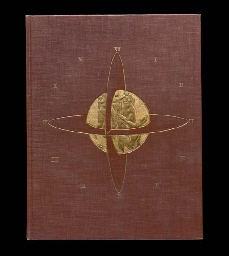
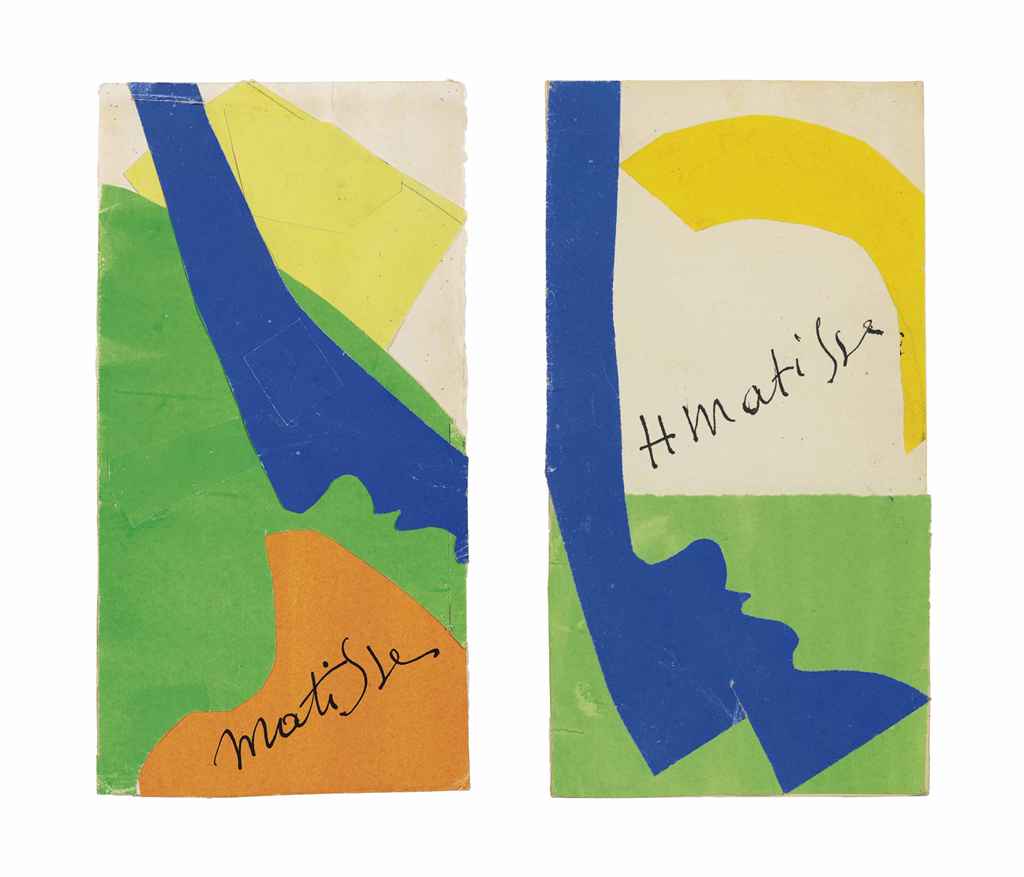
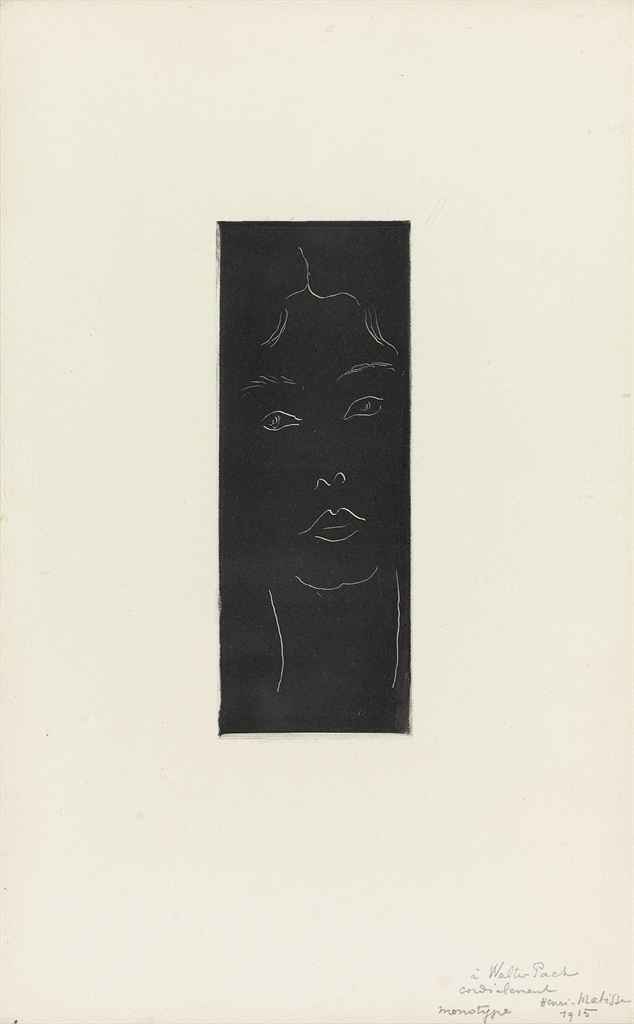
.jpg)
.jpg)
.jpg)
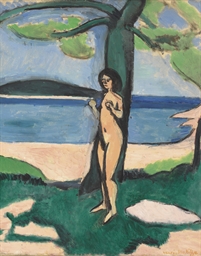
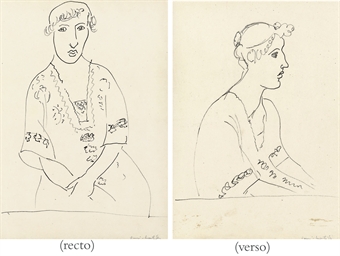
.jpg)
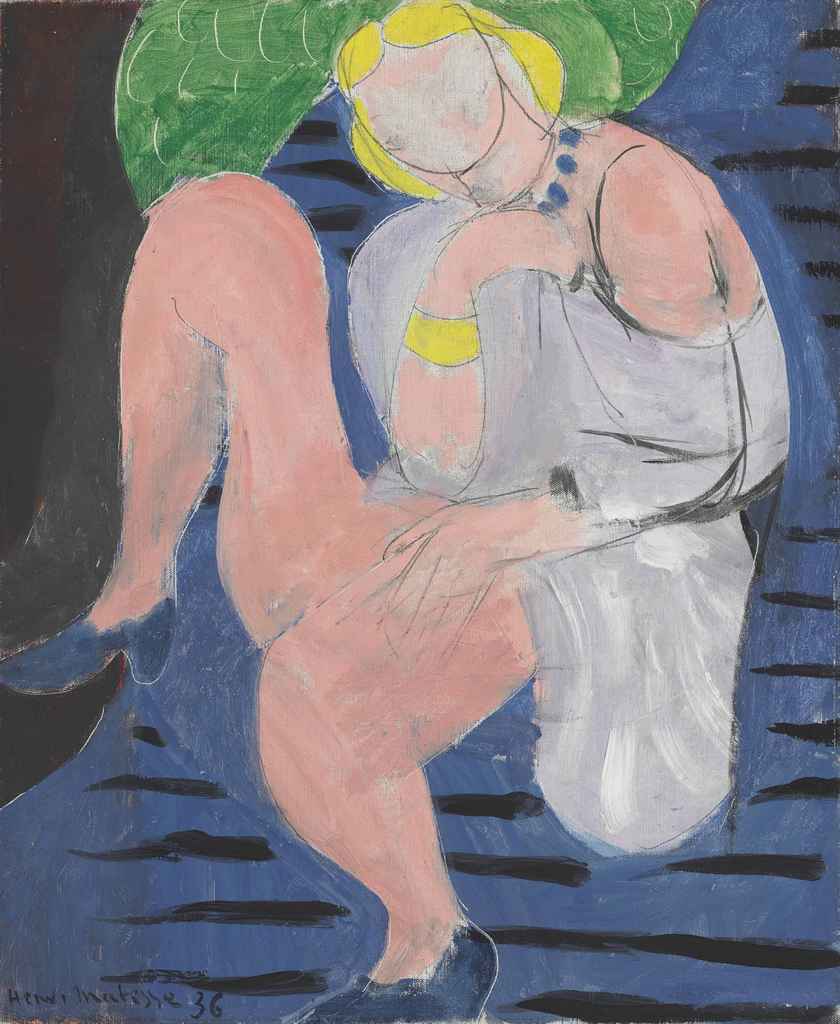
.jpg)
.jpg?height=400)
Testen Sie LotSearch und seine Premium-Features 7 Tage - ohne Kosten!
Lassen Sie sich automatisch über neue Objekte in kommenden Auktionen benachrichtigen.
Suchauftrag anlegen